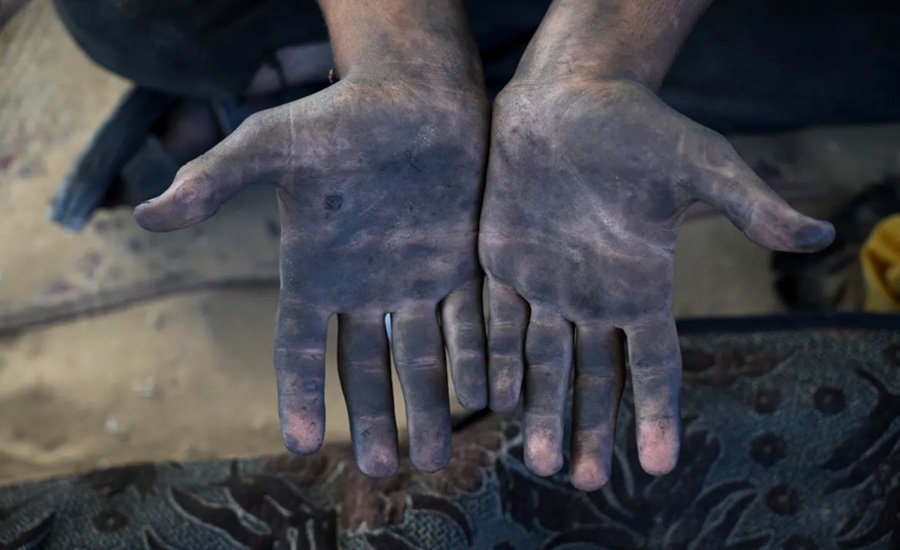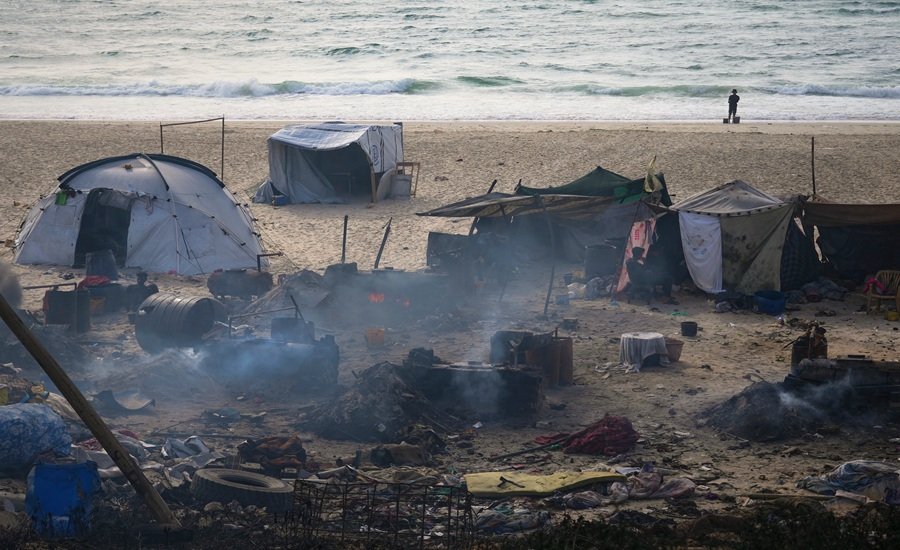GAZA — Civilians in Gaza face another deadly hazard, alongside hunger, gunfire, and bombardment — burning plastic waste to support their families in the absence of any alternative to produce income.
South of Gaza City, along the Sea Road that runs beside the Mediterranean, young Palestinians are producing fuel by melting plastic in makeshift burners.
With limited access to commercial fuel, they collect plastic waste, process it in metal drums to extract crude fuel, and then bottle and sell it to passers-by.
The work unfolds in the open air, where black smoke billows from the burners, blanketing the roadside. The area is lined with small tents where the youth store materials and rest between shifts. Horse-drawn carts and pedestrians regularly pass through the smoke-filled stretch, moving between northern and southern Gaza.
Most of those involved in the trade are displaced and have few other sources of income. The fuel they produce is used locally, often for generators or transport, and sold at a lower price than commercial alternatives.
Though the process is simple, it involves long hours and exposure to fumes and open flames. For these youth, it has become a way to earn money and support their families in a difficult and unstable environment.

A Palestinian youth shows his hands while working to extract fuel from melted plastic. — AP
Half a million people in the Gaza Strip are facing starvation and the remainder of the population is suffering from high levels of acute food insecurity, according to a recent report by the UN’s Integrated Food Security Phase Classification (IPC).
The UN Office for the Coordination of Humanitarian Affairs (OCHA) in a report on Wednesday stated, “Shelling and bombing across the (Gaza) Strip continue to have a devastating impact on civilians, reportedly killing and injuring scores of people, many of whom were seeking aid.”
“Partners report that in the absence of fuel, cooking gas, and electricity, people are burning plastic waste.”
OCHA said that when such fires occur in makeshift shelters or tents, poor ventilation poses tremendous safety and health risks to vulnerable family members, including children and older individuals, reports Xinhua news agency.
The Red Cross Field Hospital in Rafah received a mass casualty influx of 149 cases, as reported by the International Committee of the Red Cross (ICRC), on Tuesday.
“All responsive patients reported they were wounded while on their way to an aid distribution site,” the ICRC said.
“Sixteen people were declared dead on arrival, and three more died of their wounds shortly after. The vast majority of patients reportedly suffered gunshot injuries.”

Smoke billows from the burners.
The casualties among food-seeking Gazans usually occur at distribution centres of the non-UN, US-operated, and Israeli-approved militarised Gaza Humanitarian Foundation.
The humanitarian office said that community kitchens were able to prepare more than 200,000 meals every day this week. However, compared with the over 1 million meals distributed daily at the end of April, it represents a reduction of about 80 percent, a trickle offered to people on the brink of famine.
“To facilitate the orderly distribution of aid, supplies must be channeled daily through multiple crossings and land routes simultaneously, thereby ensuring people that the flow of essential support is steady, sufficient, and reliable,” the Office said. — Agencies

